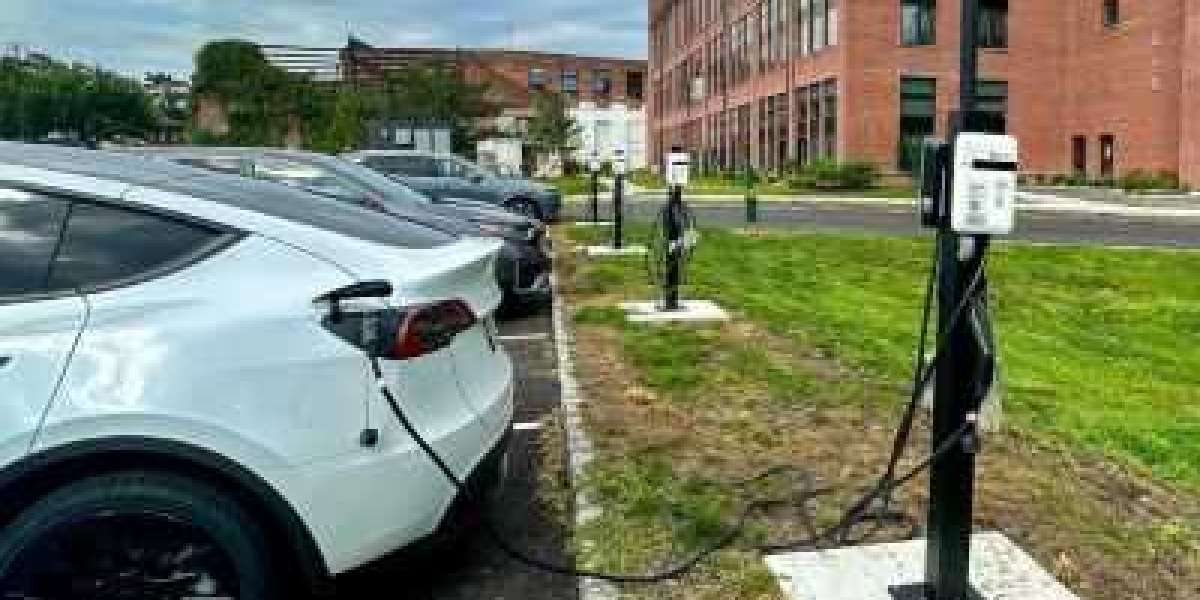Apartment EV Charging: Why It’s Essential and How to Make It Work
Introduction
As a leading EV charger manufacturer in China, LiCB Charge delivers dependable AC and DC electric vehicle charging stations along with comprehensive charging solutions.
As the world shifts toward sustainable transportation, electric vehicles (EVs) are taking the lead. EVs offer lower emissions, reduced fuel costs, and quieter rides, but the supporting infrastructure is still catching up—especially for renters. While homeowners usually have the freedom to install EV chargers, renters face unique hurdles. For the EV transition to succeed, charging access must extend to everyone, including the 44 million U.S. households living in rental properties.
Apartment EV charging is no longer a future luxury — it’s an immediate necessity. With EV sales already at 8.6% and expected to reach between 13% and 29% by 2050, multifamily communities need to prioritize this critical amenity now.
Understanding the Basics of Apartment EV Charging
Level 1 Charging: Accessible but Slow
Uses a standard 120-volt outlet common in homes. It’s the most accessible but slowest charging option, delivering about 3–5 miles of range per hour. A full charge can take over 50 hours, making it impractical for most daily uses.
Level 2 Charging: The Practical Residential Standard
Operates on a 240-volt circuit and is the most popular option for home and apartment charging. It delivers 15–40 miles of range per hour, fully charging most EVs in 4–10 hours. For multifamily properties, Level 2 chargers offer the best balance of cost, speed, and convenience.
Level 3 Charging (DC Fast Charging): Ultra-Fast but Commercial
DC fast chargers recharge up to 80% battery capacity in under an hour, operating at very high voltages (400–1,000 volts). These are ideal for highways and public hubs but less practical for apartment buildings due to infrastructure and cost challenges. Still, large urban developments might invest in Level 3 chargers for quick tenant top-ups.
Why Apartment EV Charging Matters
1. It Eases Range Anxiety
Range anxiety—the fear of running out of charge without a nearby station—is a major barrier to EV adoption. Reliable apartment charging means renters can leave home fully charged and confident, making EV ownership practical.
2. It Adds Daily Convenience
Charging at home turns EV ownership from a chore into a seamless routine. Renters can plug in overnight and wake up ready to go, without needing to hunt for public chargers or wait in line.
3. It Removes a Key Barrier for Renters
Unlike homeowners, renters often depend on landlords or property managers to provide charging infrastructure. Offering EV charging as a built-in amenity eliminates a major obstacle and attracts tenants who want electric mobility.
4. It Can Be More Affordable Than Public Charging
Public charging costs vary widely, often depending on location and time. Apartment charging offers predictable, potentially lower costs, with fees integrated into leases or offered at discounted rates, enhancing tenant satisfaction.
Overcoming the Unique Challenges of Apartment EV Charging
Challenge 1: Infrastructure Constraints
Older buildings may lack the electrical capacity to support multiple chargers.
Solution: Begin with a professional electrical assessment. Implement load management systems to distribute power efficiently and avoid costly upgrades. Smart chargers can dynamically allocate power based on demand.
Challenge 2: Limited Parking Allocation
Assigning EV chargers fairly in limited or assigned parking can be tricky.
Solution: Start with a few shared or reserved spots and expand as demand grows. Use waitlists or reservation apps to ensure fair access. Monetize charger use to help cover costs.
Challenge 3: Outdoor Parking Conditions
Outdoor chargers face weather, longer cable runs, and connectivity needs.
Solution: Use weatherproof chargers designed for outdoor use, mounted on bollards, pedestals, or walls. Plan trenching and conduit carefully. Employ smart chargers with cellular or Wi-Fi to maintain reliable communication.
Challenge 4: Cost Concerns
Upfront installation costs may deter property owners.
Solution: Take advantage of government grants, tax credits, and utility rebates targeted at multifamily properties. Revenue from tenant charging fees or partnerships can offset long-term expenses.
How Apartment EV Charging Benefits Property Owners
1. Attract and Retain Eco-Minded Tenants
EV charging amenities appeal to environmentally conscious renters, increasing tenant loyalty and occupancy rates.
2. Boost Property Value and Marketability
EV infrastructure investments enhance property value and position buildings as future-ready, green, and competitive in the rental market.
3. Access New Revenue Streams
Charging fees—whether per kWh, per hour, or flat monthly rates—can generate passive income for property owners.
Looking Ahead: Creating Equitable Access to EV Charging
Universal EV adoption depends on equitable access to charging, ensuring renters aren’t left behind. With modern technology, financial incentives, and careful planning, most apartment communities can implement EV charging infrastructure.
Those who lead this shift will enjoy futureproof amenities, satisfied tenants, and a role in advancing sustainable transportation.
Conclusion
Apartment EV charging is no longer a luxury; it’s a necessity. It eases range anxiety, boosts convenience, removes adoption barriers, and adds property value. With smart strategies and support, even older buildings can embrace the electric future.
As EVs dominate sales and cities push cleaner transit, apartment EV charging will become an expectation. Property owners, managers, and planners must act now—not just to stay competitive, but to be part of the solution.Know more about Google SEO Directory



